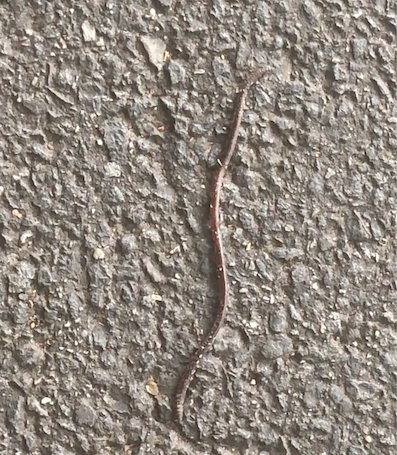|
How do worms move?
I love seeing worms come out after a good rainstorm! On a recent walk, I found a worm (video above). While I am not sure about all details about the worm, I have been able to identify it to the best of my ability as an earthworm known as the 'Asian jumping worm'. These worms are known for their “theatrical” behavior as they thrash around when handled. (I was unable to confirm this though, as I didn't touch the worm) [1]. The Asian jumping worm is an invasive species that made its way to the US from East Asia. These small, unassuming worms are invasive creatures and can change the composition of the soil and “reengineer” the soil around them [1]. One may wonder if worms have brains. They do have brains, though they are not too complex. Earthworms (and leeches) fall under a phylum called the 'annelids' [2]. The brains of segmented worms consist of two lobes, and the sensory and motor nerves originate from these cerebral ganglia (bundles of nerve cells) and reach the rest of the body [2]. Worms have a characteristic wave-like motion. The reason their movement is wave-like is that they have a segmented body. Worms have longitudinal muscles, circular muscles, and structures known as “setae” (bristle-like structures) on the outside of their bodies. Setae help the worms anchor to the location and repetitive contraction and release of muscles helps them elongate and contract their bodies, which helps them move [3]. Even a simple organism like the worm is so complex, so much so that the transparent roundworm Caenorhabditis elegans (C elegans) is routinely used to map the nervous system [4] and study aspects of aging [5] and longevity [6]. In the video on the top left, you will see an Asian jumping worm on its way in uptown Manhattan. The video on the top right shows my interpretation of the worm’s movement with my hands. Citations:
0 Comments
Leave a Reply. |
About SlokaMy name is Sloka. I am a neuroscientist and Bharatanatyam dancer; you can find more about me here. Archives
June 2024
|


